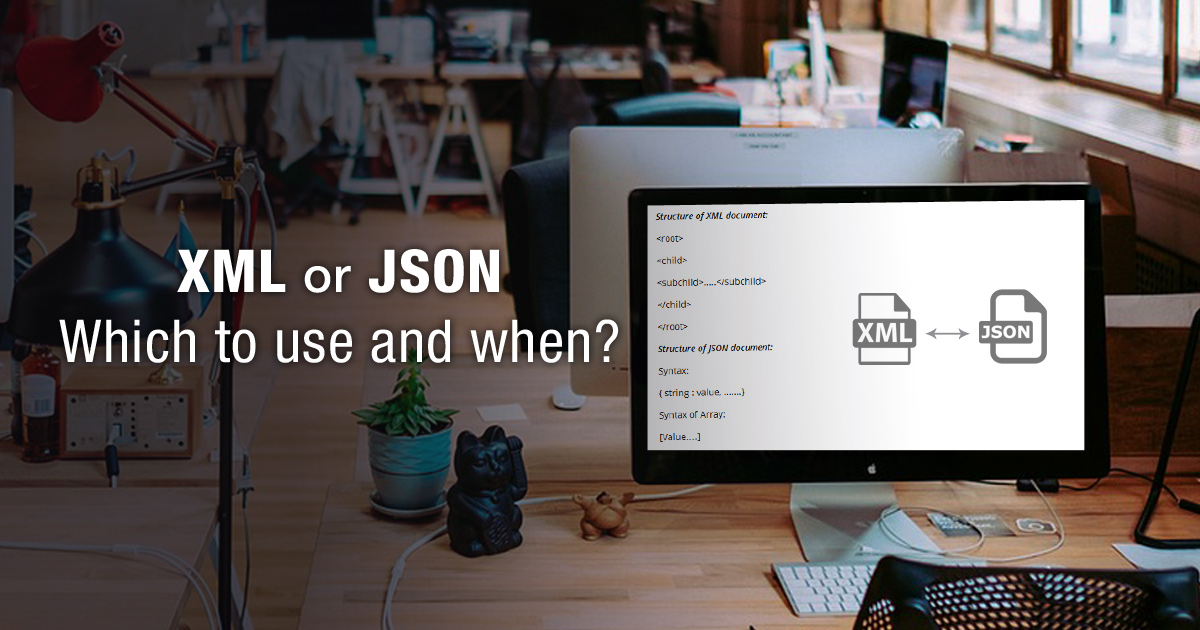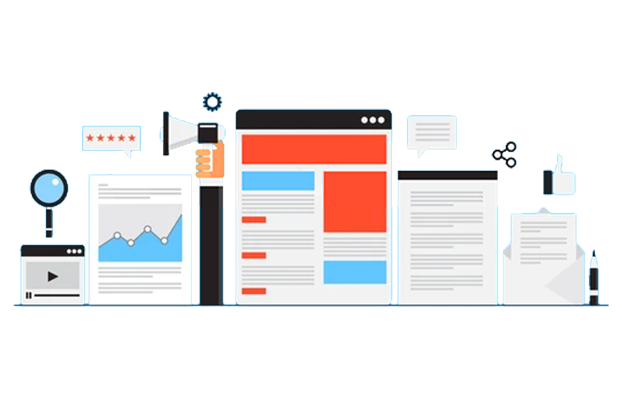Posted By
Darren Love
on
24. November 2014 03:17
When creating HTTP Application Program Interfaces (APIs), the universal question that arises is this: Which format is best to use for exchanging data between servers and client developers?
There are two widely used formats – XML and JSON – that API designers are likely to opt for these days. With all of the available formats for data exchange, these two have gained the most popularity due to XML’s built-in validation properties and JSON’s agility.

XML & JSON Structures

(Value can be string, number, object, array, true, false or null.)
Adoption and Industry Trends
Initially, XML was the preferred choice for many sectors and the control of their data, such as finance, healthcare and e-commerce. The structure of XML gives an opportunity to include a wide array of information in a formatted way, and this characteristic makes it applicable to complicated applications.
Yet, as web development technologies evolved and speed and efficiency became more important for developers, JSON started to look like a better solution. Its simplicity and ease of use, along with the ability to quickly send data across the internet made JSON a popular choice for new applications especially those that were web or mobile-oriented.
The preference for JSON has grown, particularly in industries and projects that prioritize fast development cycles and performance, such as interactive websites, mobile applications, and services requiring real-time data exchange. Its lightweight nature ensures that data can be transferred more swiftly and efficiently, enhancing the user experience.
Despite this shift towards JSON, XML continues to hold significant value in scenarios where the comprehensive structuring of data is crucial. Its capacity for representing complex data makes it indispensable in certain domains and applications.
Technical Comparison and Use Cases
# Syntax Verbosity
- XML: Characterized by a higher degree of verbosity with opening and closing tags, attributes within tags, supports comments, namespaces, and extensive metadata.
- JSON: Streamlined, minimalistic structure representing data as key-value pairs, arrays, and nested objects. Does not support comments or namespaces directly, simplifying its structure.
# Ease of Parsing
- XML: Requires sophisticated parsers due to its complex structure, potentially slowing down the parsing process.
- JSON: Easier and faster to parse, mirroring many programming languages' native data structures.
# Parsing Speed
- JSON outperforms XML in parsing speed, benefiting from its alignment with programming languages' data structures.
# Network Performance
- XML's verbose syntax results in larger file sizes, impacting data transmission speed over networks.
- JSON's lightweight nature ensures quicker data exchange, advantageous in bandwidth-limited environments.
Use Case Scenarios
# Complex Document Handling (XML Preferred)
- SOAP Web Services: XML's structure supports complex operations and transactions.
- Document Validation: Essential for applications requiring strict data validation (e.g., legal, financial systems).
# Dynamic Web Applications (JSON Preferred)
- REST Web Services: JSON's simplicity and efficiency align with RESTful service requirements.
- IoT Devices and Mobile Applications: JSON's format suits environments with limited processing power and bandwidth, ensuring rapid data handling.
# Integration and Ecosystem
- Diverse Toolsets: The digital landscape offers an array of serializers, validators, and converters for both XML and JSON.
- Impact on Implementation: The maturity of these tools simplifies integrating these formats into software projects, making development quicker and more reliable.
# API Design Considerations
- Modern API Design: XML and JSON are central to contemporary API architecture, influencing design principles significantly.
- RESTful Design: JSON is preferred for its lightness and simplicity, ideal for web services.
- Complex Data Handling: XML shines in scenarios requiring detailed documentation and strict validation, thanks to its compatibility with SOAP and detailed schema definitions.
- Emerging Technologies: With GraphQL and OData, JSON's flexibility becomes a major advantage, facilitating easier data querying and manipulation.
- Strategic Choices: Selecting between XML and JSON goes beyond technical preferences, impacting API usability, developer interaction, and system maintainability.
Practical Advice and Best Practices
Selecting the appropriate format for data exchange, whether XML or JSON, necessitates a nuanced understanding of your project's unique requirements. This decision influences not only the immediate ease of development and integration but also the long-term maintainability and scalability of your application. Let's dissect the criteria to consider and follow up with strategies to enhance data exchange efficiency.
# Assessing Data Complexity
- XML: Flourishes in handling complex data structures with attributes, nested elements, and mixed content. Its capability to define custom schemas makes it a prime choice for industries requiring detailed data validation, such as healthcare and finance.
- JSON: Shines with data that maps naturally to key-value pairs, making it ideal for web applications and services where speed and simplicity are paramount. Its straightforward structure supports rapid parsing and serialization, beneficial for mobile apps and microservices.
# Environment Compatibility
- Development Environment: Consider the programming languages and platforms your project relies on. JSON, being lightweight and natively supported in JavaScript, is often the go-to for web development. XML, with its extensive support across various programming languages, might be preferred for enterprise systems where extensive data validation is necessary.
# Performance Considerations
- Efficiency: JSON typically requires less bandwidth, translating to faster data transmission. This efficiency makes it suitable for real-time applications and services with high traffic volumes.
- Processing Power: XML parsers can be more resource-intensive, which might be a critical factor for systems with limited processing capabilities.
# Minimize Payload Size
Trimming unnecessary data from your payloads can significantly improve transmission speed and reduce latency. For JSON, this might mean removing optional fields that are not required for a particular operation. In XML, consider simplifying your document structure and avoiding redundant nesting.
# Leverage Compression Techniques
Use compression algorithms such as GZIP to compress your data payloads during transit and this can result in significant reductions. Compression of XML and JSON data is beneficial in most cases, particularly when dealing with a large quantity of information or restricted bandwidth.
# Choose Appropriate Parsing Libraries
The selection of parsing libraries is crucial for optimizing the performance of your data handling. For JSON, libraries like Jackson and Gson in Java, or JSON for Python, offer efficient parsing capabilities. For XML, libraries such as libxml2 or Xerces can provide robust parsing solutions that handle XML's complexities effectively.
# Utilize Caching Strategies
Caching the data which is accessed frequently can avoid retransmission of the same set of information over and again thus reducing network traffic, and improving response time. Caching techniques can be used for both XML and JSON data formats depending on the nature of the content as well as access patterns.
Conclusion
The decision between XML and JSON, as well as the improvement of data exchange should be based on a deep understanding of your project’s specific requirements, nature of involved information and the environment in which they will operate. If you carefully use these principles and best practices, then the data exchange of your web applications will be effective, scalable, and maintainable.


